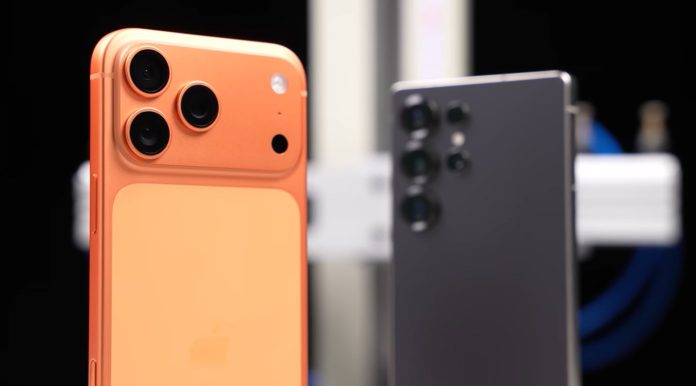Apple made a bet on its flagship phones this year. The iPhone 17 series brought a big redesign, but it also brought the replacement of titanium with aluminum in the Pro variants. This new finish, which offers improved heat dissipation, has now been put to the test. More specifically, the PhoneBuff team put the iPhone 17 Pro Max through a series of tough drop tests.
In this “durability showdown,” the iPhone 17 Pro Max was pitted against the Samsung Galaxy S25 Ultra and its titanium alloy frame. Both materials have their perks and drawbacks. That said, tests reveal some interesting differences in how each phone handles a fall.
Drop Test pits the iPhone 17 Pro Max against the Samsung Galaxy S25 Ultra
The comprehensive series of six drop tests was designed to simulate real-world falls. It included drops on the back, corners, and front of the phones from varying heights. Ultimately, the results were a surprising tie, proving that each material has unique strengths and weaknesses.
When dropped on its back, the iPhone 17 Pro Max’s aluminum body proved to be more resilient. The aluminum absorbed the impact, causing the rear glass to crack but leaving the camera lenses largely intact. In contrast, the Galaxy S25 Ultra’s titanium frame transferred the force more directly. This resulted in more prominent cracks to its back glass and noticeable damage to its telephoto camera’s autofocus unit.
However, it was completely the opposite in the corner drop test. The iPhone 17 Pro Max’s aluminum, being a softer metal, sustained visible scuffs and a noticeable dent from the impact. The Galaxy S25 Ultra’s titanium alloy, on the other hand, performed incredibly well. Samsung’s devices showed almost no damage and appeared exceptionally durable.

The front-facing drop tests from both one and a half meters revealed similar outcomes for both phones. The screens on both the iPhone 17 Pro Max and the Galaxy S25 Ultra cracked, with the damage spreading across the display. Despite the shattered glass, both Face ID on the iPhone and the in-display fingerprint sensor on the Galaxy S25 Ultra continued to work as intended.
Differences between aluminum and titanium
These tests highlight the trade-offs in material choice. Aluminum is more malleable and can absorb some impact. This helps protect the internal components and glass from certain types of falls. However, this same quality makes it more susceptible to scuffs from concentrated impacts. It also appears to be more prone to scratches, according to recent reports.
On the other hand, titanium alloy is far more resistant to these kinds of direct hits but can transfer force in a way that causes more extensive glass damage.
#iPhone #Pro #Max #Galaxy #S25 #Ultra #Ultimate #Drop #Test

